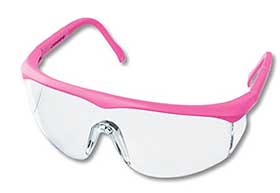Frog Dissection - Teacher's Guide 
Downloadable Resources for a Unit on Vertebrate Anatomy
- Complete Frog Packet
- Labeled Images of the Frog
- External Anatomy of the Frog
- Frog Brain and Bones
- Frog Dissection Crossword
- Alternative to the Frog Dissection
- Ultimate Frog Anatomy Review
- Label the Anatomy of a Frog
- Color the Dissection of a Frog
- Frog Gallery
- Observe a Living Frog
- Bullfrog Anatomy
Dissection Tips and Tricks
Obtain grass frogs from a biological supply company. I usually order mine from Carolina. It is not necessary for this lab to get the injected frogs. I have also gotten a single pack of bullfrogs to give one per class. Bullfrogs are much larger, but that doesn't mean they are easier to dissect. The bullfrogs are messier and hard to cut, I have a "lottery" to pick a group to do the bullfrog and then the other students in the class can see what it looks like.
Group sizes - I usually put my students in groups of 2, possibly three if I have an odd number of students. If I have extra frogs I might allow students to work alone (their choice). Usually the students decide who is going to read / write, and who is going to do the cutting. I also use virtual frogs before the dissection to give them a clue about the structures they will see inside.
Lab Resources - The frog dissection gallery is a good resource for teachers and students to review the parts of the frog. I also encourage my students to try to discover the answers to their questions before asking for help. I have resources such as lab manuals and frog dissection guides laying around the lab. When students ask me questions, I require them to at least have a book open to the appropriate page to show me they tried to find the answer on their own. Remember that dissection is a learning process and part of the objectives should be to teach students to become independent learners. Younger students may need more help than older students.
Safety Considerations - students must wear safety goggles, frogs will sometimes spray fluid when you cut them and this fluid can be painful if it enters the eyes. If this happens, use eyewash and liberally flush eye with water. Latex gloves are preferred, but not entirely necessary. Students should wash hands even if they wore gloves. Your district may have additional rules about dissections and safety (some may require parental permission.)
Classroom Management - this can be a stressful time for teachers because students can get very excited and forget classroom rules. When you're helping one student, another may be throwing frog guts at their neighbors. Address these issues before you start the lab and make clear that horseplay will not be tolerated. Be prepared to enforce this. I typically end up removing a student from the class the first day, this student must do the alternate assignment in the hall. It sounds harsh, but if you're willing to give a freshmen scalpels, then be prepared to be very stern to ensure the safety of all of your students.
You may also consider have students sign a safety contract prior to doing labs. (See also: Flinn Scientific Safety Contract)
Grading - the dissection can be difficult to grade. I usually grade the questions and labelings from the Frog Dissection Handout and also give them a paricipation grade based on how well they did the lab, such as cutting the frog, cleaning up, and working well with others. Finally, students get a lab test over the frog where frogs have been set up and tagged; students move from station to station to identify the structures that have been pinned.
Key to Lab Handout Questions and Labeling
Students are free to look up information on the web, but I do not want them to take a shortcut by just copying answers from a posted key. For that reason, I do not share keys on biologycorner.
You can purchase a key from Teachers Pay Teachers, for $1.50 which includes answers to questions in the lab guide and labeled diagrams.
This is simply a way for me to limit access to students, and proceeds help with hosting costs for biologycorner.com
None of the answers are that difficult, and most biology teachers (or science teachers) should have little difficulty answering the questions on the guide. Students, to answer the questions, you simply need to read carefully, the answers are in the instructions.
